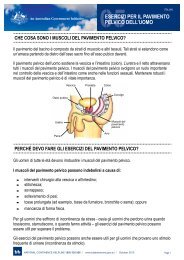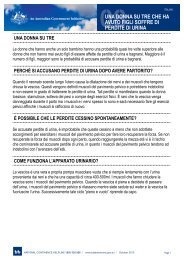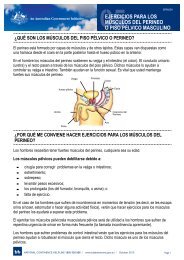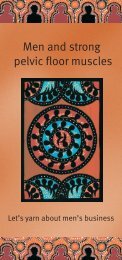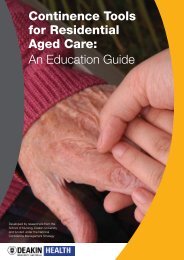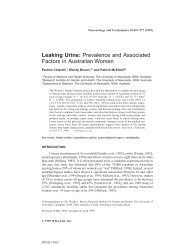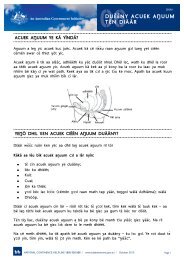Pharmacy Continence Care - Bladder and Bowel Website
Pharmacy Continence Care - Bladder and Bowel Website
Pharmacy Continence Care - Bladder and Bowel Website
You also want an ePaper? Increase the reach of your titles
YUMPU automatically turns print PDFs into web optimized ePapers that Google loves.
In the follow-up survey, there was a significant increase in the proportion of consumers<br />
using sanitary disposable pads (up 29 points to 57 per cent), while those using incontinence<br />
disposable pads dropped 21 points to 60 per cent, those using special undergarments<br />
dropped 17 points to 20 per cent <strong>and</strong> those using drainage products dropped 11 points to<br />
three per cent. Usage of skincare products remained stable at 27 per cent.<br />
The results across both surveys indicate that continence care products such as incontinence<br />
disposable pads, special undergarments, skin care products <strong>and</strong> drainage products<br />
purchased by pharmacy customers were most commonly purchased from a chemist or<br />
pharmacy. Those purchasing sanitary disposable pads most commonly reported buying these<br />
from a chemist or pharmacy in the baseline survey, however there was a significant increase<br />
in the proportion of those purchasing from a supermarket in the follow-up survey (from 18<br />
per cent to 69 per cent).<br />
Expenditure on incontinence care products<br />
Baseline <strong>and</strong> follow-up survey results indicated that expenditure on non-drug incontinencerelated<br />
products (such as disposable pads, special undergarments, drainage products etc.) is<br />
most commonly under $10 per week (45 per cent vs. 40 per cent) or between $10-$25 per<br />
week (29 per cent vs. 43 per cent). Only a small minority spent in excess of $26 (7 per cent<br />
in baseline survey).<br />
Around three quarters (74 per cent) of respondents in the baseline survey reported a nil<br />
expenditure on skin care products, compared with 63 per cent in the follow-up survey. Of<br />
those spending on skincare products, the majority spent under $10 per week (23 per cent<br />
vs. 27 per cent), while a minority spent between $10 to $25 per week (2 per cent vs. 7 per<br />
cent).<br />
Around one quarter (24 per cent) of female respondents in the baseline survey reported a nil<br />
expenditure on women’s sanitary products to help with incontinence, compared with half (50<br />
per cent) in the follow-up survey. Of those spending on women’s sanitary products, the<br />
majority spent under $10 per week (37 per cent or 25 per cent) or between $10-$25 per<br />
week (26 per cent vs. 21 per cent). Only a minority spent more than $26 per week on<br />
women’s sanitary products (11 per cent vs. 4 per cent).<br />
Changes in expenditure<br />
In the follow-up survey, just under half (47 per cent) of respondents reported a change in<br />
continence care product expenditure compared with what they previously spent, with 30 per<br />
cent now spending more <strong>and</strong> 17 per cent spending less. The main reasons identified in the<br />
follow-up survey by respondents include the following:<br />
• spending more because:<br />
o using more pads/have to wear more (mentioned by five respondents)<br />
o price has gone up (mentioned by two respondents)<br />
o forget to change/urinate when sleeping (mentioned by two respondents).<br />
• spending less because:<br />
o no need to buy – supplied/had operation/begun toilet program (mentioned by three<br />
respondents)<br />
o no longer caring for the person (mentioned by two respondents).<br />
Final Report<br />
42<br />
NOVA Public Policy<br />
<strong>Pharmacy</strong> <strong>Continence</strong> <strong>Care</strong> Project



